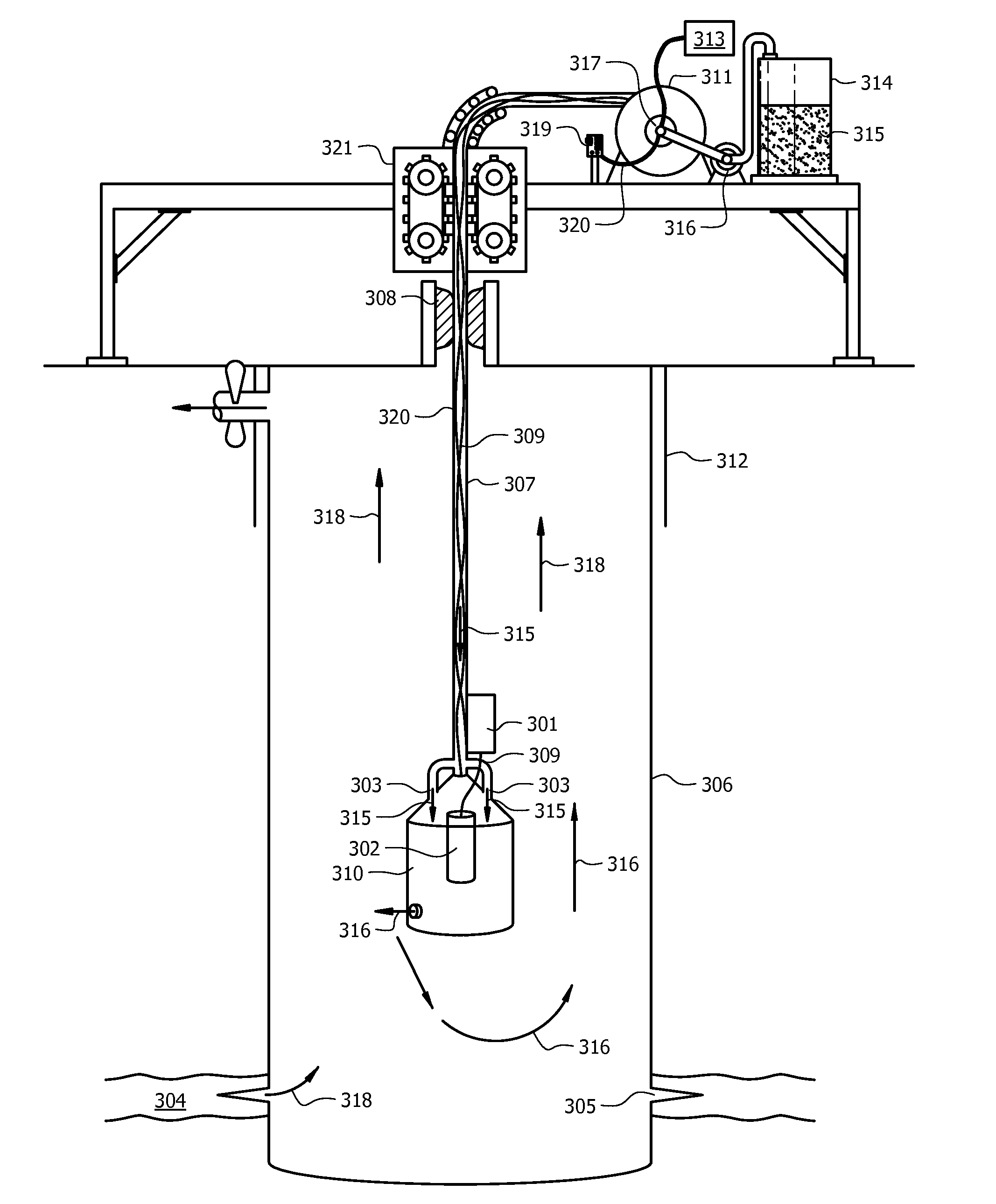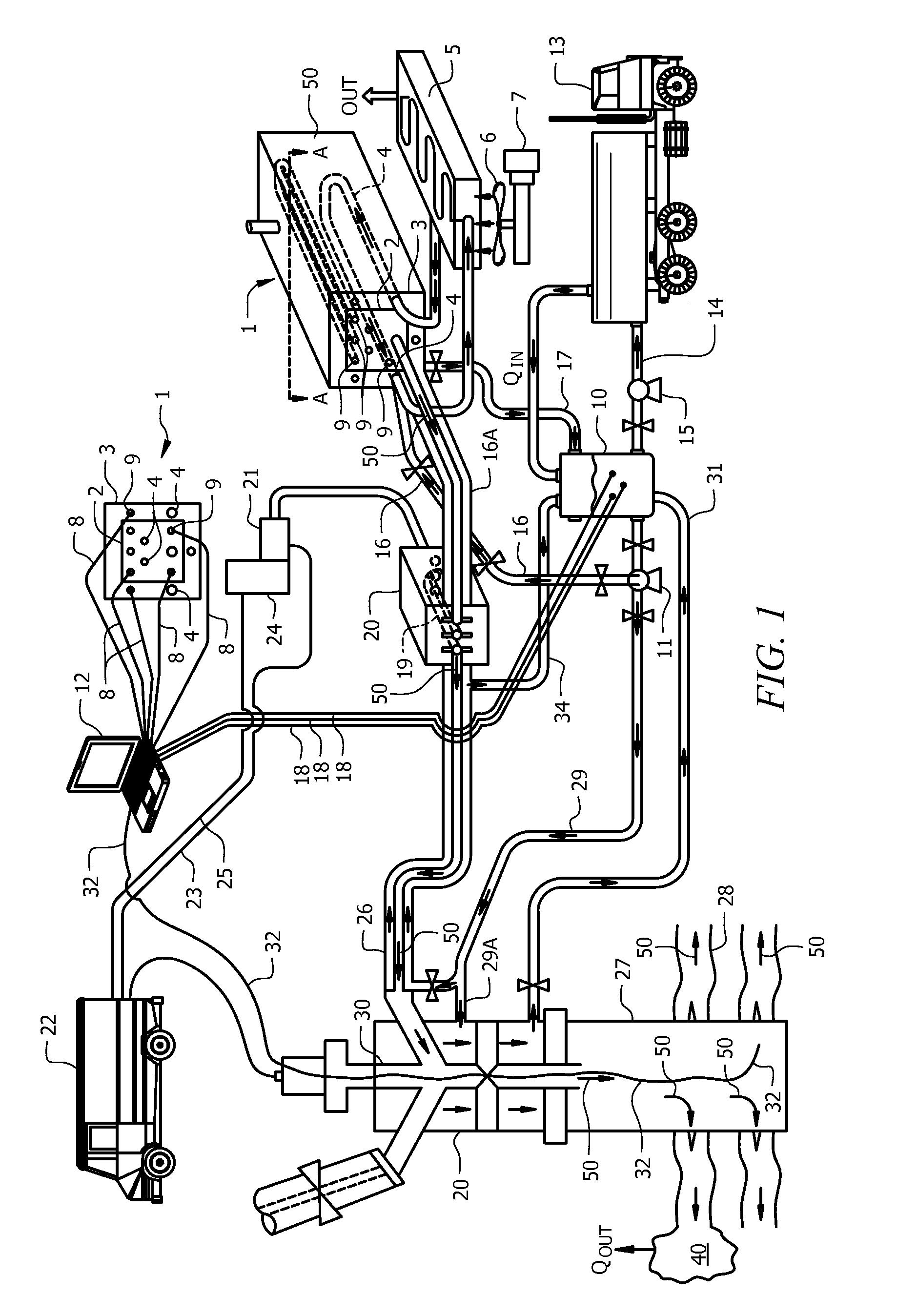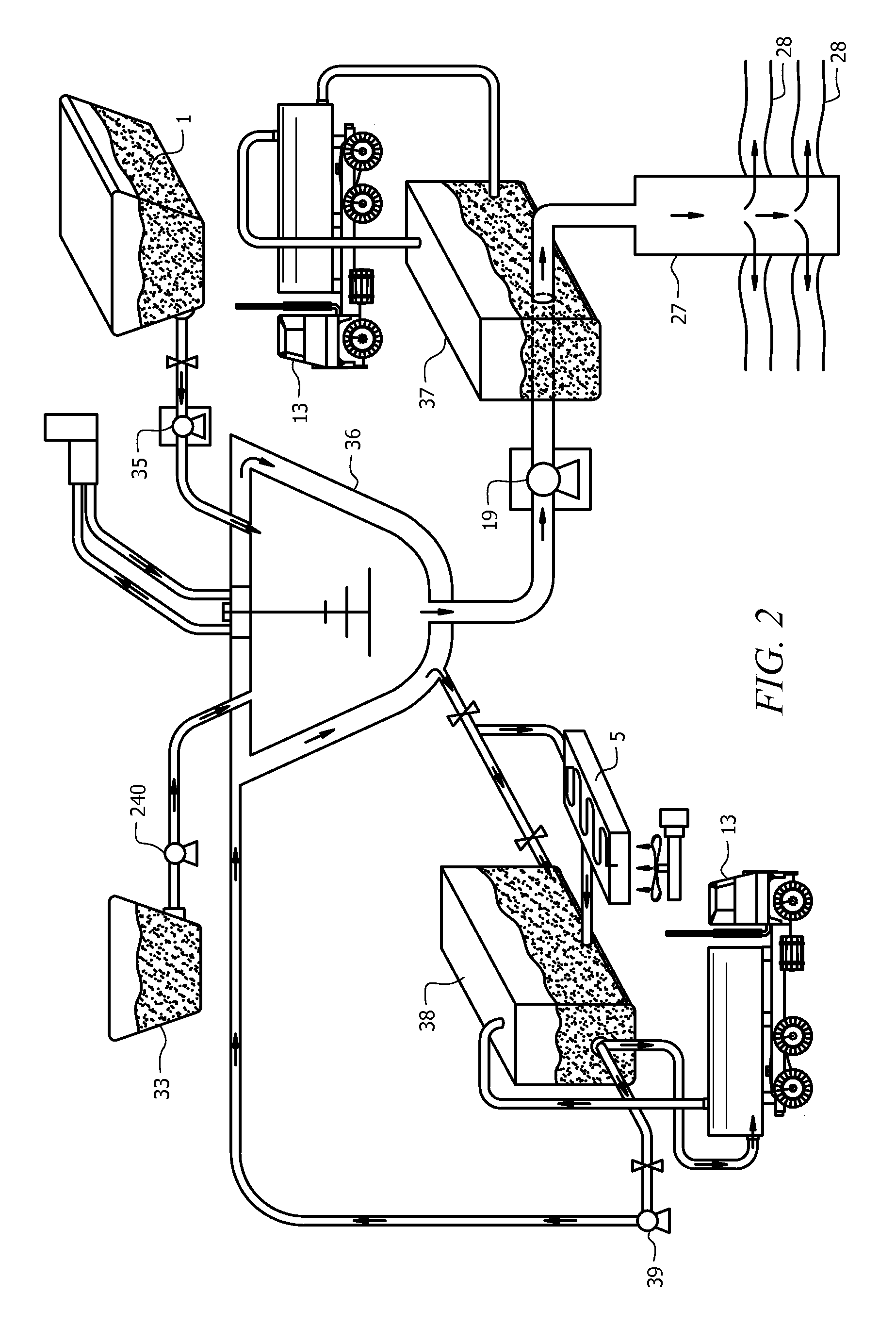Method and apparatus to treat a well with high energy density fluid
a high energy density fluid and wellbore technology, applied in the direction of fluid removal, wellbore/well accessories, insulation, etc., can solve the problems of only cracking the rock near the wellbore, reducing the reservoir's ability to produce commercial hydrocarbon fluid, and cracking the rock, etc., to achieve the effect of safe injection
- Summary
- Abstract
- Description
- Claims
- Application Information
AI Technical Summary
Benefits of technology
Problems solved by technology
Method used
Image
Examples
Embodiment Construction
[0034]As used herein, “a” or “an” means one or more. Unless otherwise indicated, the singular contains the plural and the plural contains the singular.
[0035]In many aspects and embodiments, the present invention uses reactive high energy density substances that can deliver a relatively high amount of energy per unit weight. Examples of such substances include 10% hydrogen peroxide, 100% hydrogen peroxide, hydrazine mixtures, and other substances.
[0036]In the embodiment of FIG. 1, tank 1 holds a reactive fluid 50 and has shroud 3 located around inner tank 2. Many reactive fluids may be used, including but not limited to hydrogen peroxide, hydrazine, monopropellants, hydrogen fluoride, hypergolic fluids (i.e., combustible without an ignition source), acids, bases, alcohols, diesel, propane, liquid natural gas, and combinations thereof. The reactive fluid 50 is preferably stored, monitored, and temperature controlled inside inner tank 2. Located inside tank shroud 3 are heat exchanger ...
PUM
 Login to View More
Login to View More Abstract
Description
Claims
Application Information
 Login to View More
Login to View More - R&D
- Intellectual Property
- Life Sciences
- Materials
- Tech Scout
- Unparalleled Data Quality
- Higher Quality Content
- 60% Fewer Hallucinations
Browse by: Latest US Patents, China's latest patents, Technical Efficacy Thesaurus, Application Domain, Technology Topic, Popular Technical Reports.
© 2025 PatSnap. All rights reserved.Legal|Privacy policy|Modern Slavery Act Transparency Statement|Sitemap|About US| Contact US: help@patsnap.com



